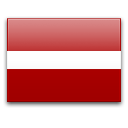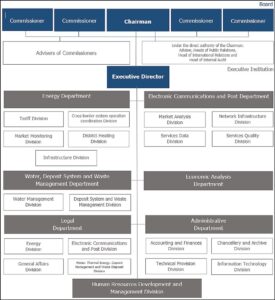Public Utilities Commission (PUC)
Public Utilities Commission (PUC)

Latvia
Sectors Regulated:
Electricity, Natural Gas, District Heating, Water, Wastewater, Telecommunication, Post, Waste Disposal, Deposit System
- Skanstes street 25
Riga, LV-1013, Latvia - +371 67 097 200
- sprk-at-sprk.gov.lv
- www.sprk.gov.lv
Regulatory Authority General Information
- Joined ERRA in 2000 (Founding Member)
- Established in 2001
Responsibilities
- Legal basis/ mandate
- Law on Regulators of Public Services, Energy Law, Electricity Market Law, Law on Electronic Communications, Postal Law, Law on Water Management Services, Packaging Law and other legal acts concerning regulated sectors and public administration.
- Responsibilities
- Is a multi-sector regulator overseeing electricity, natural gas, district heating, electronic communications and post, water management and waste disposal and deposit system. It is responsible for licensing/ registration, tariffs, monitoring the activity of utilities, including the quality of service, protecting consumer interests, developing and approving the secondary legislation, promoting competition, resolving disputes.
- Authorities
- • Independence: Has the status of fully autonomous state institution.
- • Supervised by the Parliament.
- • Reports to the Parliament annually.
- • Appeal process: Administrative Court.
Organisational Structure
- Organigram

- Internal Structure
- The Parliament (Saeima), following the recommendation of the Cabinet of Ministers, appoints 5 Commissioners of the PUC’s Board (they can be reappointed for the second term). The staggered terms of Commissioners are applied. The decision-making body of the PUC is its Board. The PUC has structural units corresponding to each regulated sector and support units..
- Working Employees
- • Decision-Making Level: 5
- • Total Number of Employees: 115
- Budget
- Is financed through regulated services’ providers. The duty to be paid to the PUC should not exceed 0,2 % of the net turnover of regulated services.

